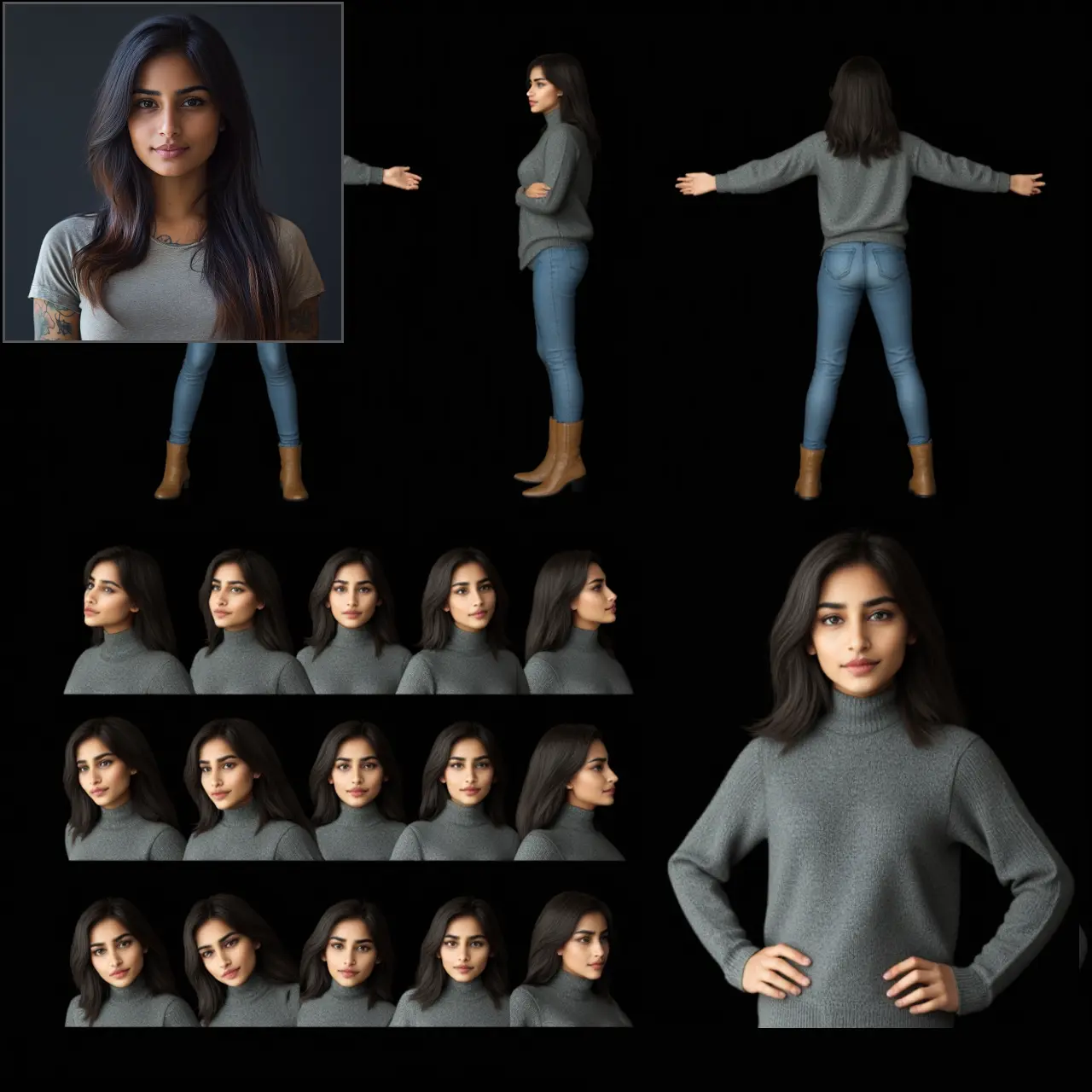ComfyUI Node: CLIP Prompt Conditioning 🐼
CLIP PromptConditioning|fofo
Categoryfofo🐼/conditioning
zhongpei (Account age: 3543days) Extension
Comfyui_image2prompt Latest Updated
2024-05-22 Github Stars
0.28K
- Description
- CLIP Prompt Conditioning 🐼| CLIP Prompt Conditioning 🐼:
- CLIP Prompt Conditioning 🐼| CLIP Prompt Conditioning 🐼 Input Parameters:
- CLIP Prompt Conditioning 🐼| CLIP Prompt Conditioning 🐼 Output Parameters:
- CLIP Prompt Conditioning 🐼| CLIP Prompt Conditioning 🐼 Usage Tips:
- CLIP Prompt Conditioning 🐼| CLIP Prompt Conditioning 🐼 Common Errors and Solutions:
- Related Nodes
How to Install Comfyui_image2prompt
Install this extension via the ComfyUI Manager by searching for Comfyui_image2prompt- 1. Click the Manager button in the main menu
- 2. Select Custom Nodes Manager button
- 3. Enter Comfyui_image2prompt in the search bar
Visit ComfyUI Online for ready-to-use ComfyUI environment
- Free trial available
- 16GB VRAM to 80GB VRAM GPU machines
- 400+ preloaded models/nodes
- Freedom to upload custom models/nodes
- 200+ ready-to-run workflows
- 100% private workspace with up to 200GB storage
- Dedicated Support
CLIP Prompt Conditioning 🐼 Description
Enhance text prompts with CLIP model for AI art generation through conditioning techniques for meaningful embeddings.
CLIP Prompt Conditioning 🐼| CLIP Prompt Conditioning 🐼:
The CLIP PromptConditioning| CLIP Prompt Conditioning 🐼 node is designed to enhance the conditioning of text prompts using the CLIP model, which is a powerful tool for understanding and generating images from textual descriptions. This node allows you to input a multiline text prompt and process it through various conditioning techniques to generate embeddings that can be used in AI art generation. By leveraging advanced encoding methods, it ensures that the text prompts are effectively transformed into meaningful embeddings, which can then be used to guide the generation of images. This node is particularly useful for AI artists who want to fine-tune the influence of their text prompts on the generated images, providing a high degree of control over the artistic output.
CLIP Prompt Conditioning 🐼| CLIP Prompt Conditioning 🐼 Input Parameters:
clip
This parameter expects a CLIP model instance. The CLIP model is used to tokenize and encode the text prompts into embeddings. It is essential for the functioning of the node as it provides the necessary tools to process the text input.
text
This parameter takes a multiline string input, which represents the text prompts you want to condition. The text can be split into multiple lines, each representing a different prompt. The node will process each line individually to generate the corresponding embeddings.
merge_conditioning_type
This parameter specifies the type of conditioning merge to be applied. It determines how the different text prompts will be combined to influence the final output. The available options are not specified in the context, but typically, such parameters allow for different strategies like averaging, concatenation, or weighted merging.
merge_conditioning_strength
This parameter controls the strength of the conditioning merge. It is a float value that determines the influence of each text prompt on the final output. The exact range and default value are not specified in the context, but it usually ranges from 0.0 to 1.0, where 0.0 means no influence and 1.0 means full influence.
merge_conditioning_strength_custom
This parameter allows you to specify custom strengths for each text prompt. It takes a comma-separated string of float values, each representing the strength of the corresponding text prompt. This provides fine-grained control over the influence of each prompt. If provided, it overrides the merge_conditioning_strength parameter.
sculptor_method
This parameter specifies the method to be used for token sculpting. Token sculpting is a technique to modify the token embeddings to better fit the desired output. The available methods are not specified in the context, but they typically include options like scaling, shifting, or custom transformations.
token_normalization
This parameter determines the normalization technique to be applied to the tokens. The available options are "none", "mean", "length", and "length+mean". Normalization helps in standardizing the token embeddings, which can improve the consistency and quality of the generated images.
sculptor_intensity
This parameter controls the intensity of the token sculpting. It is a float value that determines how strongly the sculpting method will be applied to the token embeddings. The exact range and default value are not specified in the context, but it usually ranges from 0.0 to 1.0, where 0.0 means no sculpting and 1.0 means full intensity sculpting.
CLIP Prompt Conditioning 🐼| CLIP Prompt Conditioning 🐼 Output Parameters:
CONDITIONING
The output of this node is a CONDITIONING object, which contains the final embeddings generated from the text prompts. These embeddings can be used to guide the generation of images in subsequent nodes. The CONDITIONING object includes both the token embeddings and the pooled output, providing a comprehensive representation of the text prompts.
CLIP Prompt Conditioning 🐼| CLIP Prompt Conditioning 🐼 Usage Tips:
- To achieve the best results, carefully craft your text prompts and split them into meaningful lines. Each line should represent a distinct aspect of the desired image.
- Experiment with different
merge_conditioning_typeandmerge_conditioning_strengthsettings to find the optimal balance for your specific use case. - Use the
sculptor_methodandsculptor_intensityparameters to fine-tune the token embeddings and achieve the desired artistic effect.
CLIP Prompt Conditioning 🐼| CLIP Prompt Conditioning 🐼 Common Errors and Solutions:
ValueError: merge_conditioning_strength_custom should have X values
- Explanation: This error occurs when the number of custom strength values provided in
merge_conditioning_strength_customdoes not match the expected number of text prompts. - Solution: Ensure that the number of values in
merge_conditioning_strength_custommatches the number of text prompts minus one. For example, if you have three text prompts, you should provide two custom strength values.
Invalid CLIP model instance
- Explanation: This error occurs when the
clipparameter does not receive a valid CLIP model instance. - Solution: Make sure to provide a properly initialized CLIP model instance to the
clipparameter.
Invalid token normalization option
- Explanation: This error occurs when an invalid option is provided for the
token_normalizationparameter. - Solution: Ensure that the
token_normalizationparameter is set to one of the valid options: "none", "mean", "length", or "length+mean".
CLIP Prompt Conditioning 🐼 Related Nodes
- Description
- CLIP Prompt Conditioning 🐼| CLIP Prompt Conditioning 🐼:
- CLIP Prompt Conditioning 🐼| CLIP Prompt Conditioning 🐼 Input Parameters:
- CLIP Prompt Conditioning 🐼| CLIP Prompt Conditioning 🐼 Output Parameters:
- CLIP Prompt Conditioning 🐼| CLIP Prompt Conditioning 🐼 Usage Tips:
- CLIP Prompt Conditioning 🐼| CLIP Prompt Conditioning 🐼 Common Errors and Solutions:
- Related Nodes
RunComfy is the premier ComfyUI platform, offering ComfyUI online environment and services, along with ComfyUI workflows featuring stunning visuals. RunComfy also provides AI Playground, enabling artists to harness the latest AI tools to create incredible art.


